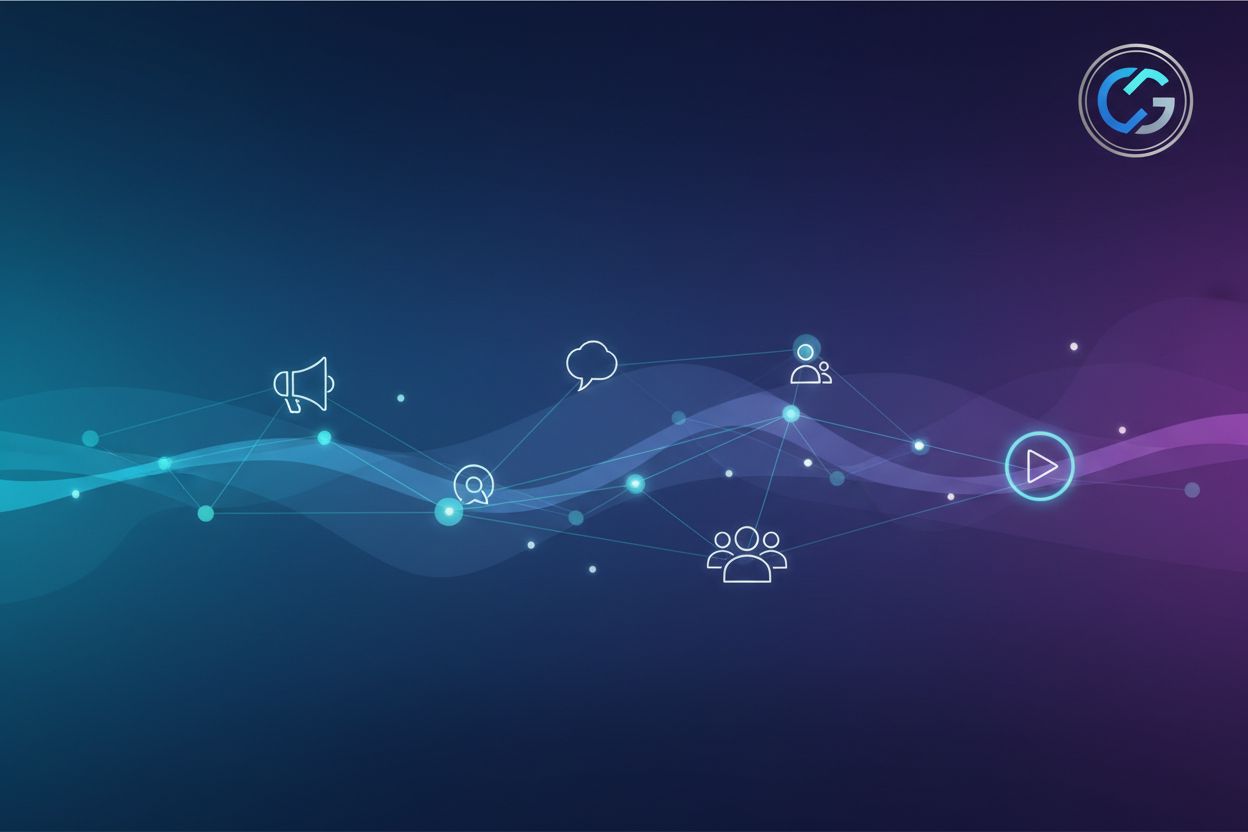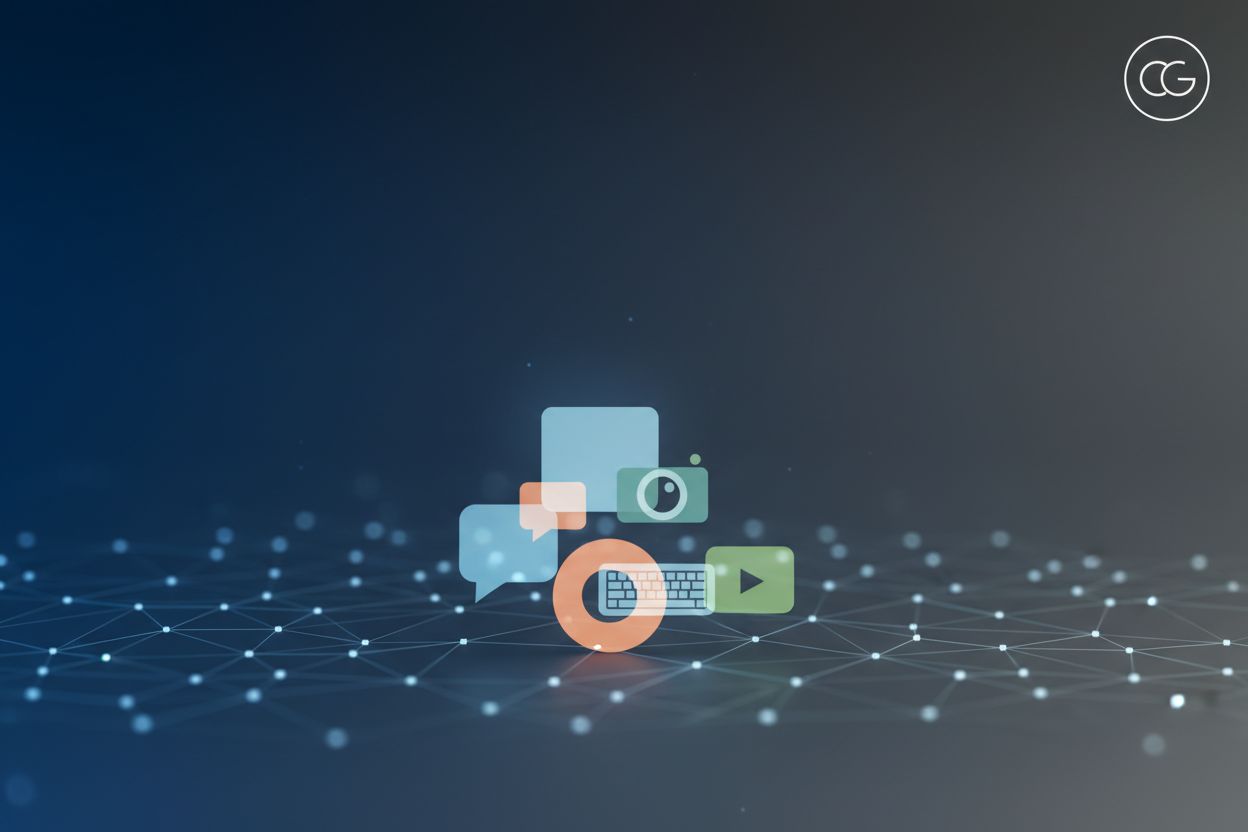UX Optimization Using AI Insights: A Comprehensive Guide for Marketers
Understanding the Power of AI in UX Optimization
Did you know that a well-designed user interface can boost a website's conversion rate by up to 200%? User experience (UX) optimization is more critical than ever for marketers aiming to maximize engagement and ROI. Let's explore how artificial intelligence (ai) enhances UX, driving better results and happier customers.
Improved UX leads to higher engagement and conversion rates. When users find a website easy to use and visually appealing, they are more likely to explore it, spend more time on it, and ultimately convert. According to BrowserStack, UX optimization enhances usability, boosting engagement.
Positive user experiences strengthen brand loyalty. Users remember and return to websites that provide seamless, enjoyable experiences. A positive interaction builds trust and encourages repeat visits, fostering long-term relationships.
Optimized UX reduces bounce rates and increases time on site. When users can quickly find what they need, they are less likely to leave a website prematurely. This increases the time they spend on the site, boosting engagement and providing more opportunities for conversion.
Better UX contributes to higher search engine rankings. Search engines like Google prioritize websites that offer a good user experience. Factors such as site speed, mobile-friendliness, and ease of navigation influence rankings, making UX optimization a key SEO strategy.
AI provides data-driven insights into user behavior. Ai algorithms can analyze vast amounts of user data, revealing patterns and preferences that inform UX design decisions. These insights help marketers tailor experiences to meet specific user needs.
AI-powered tools automate UX research and testing processes. Tools like Attention Insight predict user focus areas with ai-generated heatmaps, offering insights into how users will engage with interfaces. This saves significant time and resources compared to traditional methods.
AI enables personalized user experiences at scale. Ai can dynamically adjust website content, layout, and functionality based on individual user profiles and behaviors. This level of personalization ensures that each user receives a tailored experience.
AI facilitates predictive analysis to anticipate user needs. By analyzing historical data, ai can predict what users are likely to do next, allowing marketers to proactively offer relevant content and support. This anticipatory approach enhances user satisfaction and drives conversions.
Increased conversion rates through personalized experiences. Ai-driven personalization ensures that users receive relevant content and offers, increasing the likelihood of conversion. By tailoring experiences to individual preferences, marketers can improve engagement and drive sales.
Reduced user friction and improved task completion. Ai can streamline user journeys by identifying and eliminating pain points. This reduces friction and makes it easier for users to complete tasks, such as filling out forms or making purchases.
Enhanced user satisfaction and brand perception. When users have positive, seamless experiences, they are more likely to feel satisfied with a brand. This enhances brand perception and fosters loyalty.
Data-driven decision-making for continuous improvement. Ai provides marketers with actionable insights that inform ongoing UX optimization efforts. This data-driven approach ensures that improvements are based on real user behavior, leading to better results over time.
As ai continues to evolve, its role in UX optimization will become even more significant. Let's dive into specific ai tools and techniques that marketers can leverage to enhance user experience.
Leveraging AI for User Research and Analysis
Ai offers powerful tools that can revolutionize user research and analysis. Did you know ai algorithms can analyze vast amounts of user data, revealing patterns and preferences? The insights gained from ai can help marketers tailor experiences to meet specific user needs.
AI tools generate heatmaps to visualize user focus areas on designs. These heatmaps predict attention patterns on designs with high accuracy. For example, Attention Insight predicts user behavior before testing, saving significant time and resources. This is often achieved using computer vision and machine learning models trained on vast datasets of visual attention.
Based on attention insights, you can optimize layouts and calls-to-action to improve engagement.
Ai allows you to analyze user feedback videos, highlighting key moments in testing sessions.
It can automatically detect user sentiments and pain points, making analysis faster and more actionable. This is typically done using Natural Language Processing (NLP) for text-based feedback and sentiment analysis algorithms, which can also be applied to facial expressions or vocal tones in video feedback.
Identify usability problems with ai-driven analytics.
Track clicks, scrolls, and user interactions to understand user behavior on websites.
Ai aggregates data to identify user pain points, revealing usability issues on live websites.
Session replays provide detailed analysis of user interactions, as offered by Hotjar.
These ai-driven methods transform user research, providing actionable insights for UX improvements. Next, we'll explore ai-driven personalization and content optimization.
AI-Powered Content Generation and Personalization
Ai excels at generating engaging content and tailoring user experiences. Let's see how it works.
Ai tools can craft compelling headlines, calls-to-action (CTAs), and body text. Ai can tailor language to match your brand's tone and voice by analyzing existing brand content and identifying stylistic patterns. The best part? Ai can predict performance to refine your messaging.
Ai-driven emotional language generation can create hyper-personalized content. For instance, by analyzing user sentiment data and employing lexicons rich in emotional language, ai can craft messages that resonate on a deeper level. Ai also provides campaign-specific recommendations for higher impact. You can track success with performance analytics. For example, Persado helps UX writers craft persuasive messaging.
Simplify writing tasks with ai-generated content ideas and drafts. You can use multiple tone options to match your brand voice. Customizable templates are available for different content types. Tools like Wordtune help polish drafts and improve readability.
These tools can simplify UX writing tasks.
Optimizing UX with AI-Driven Design Tools
Ai-driven design tools are reshaping how marketers approach UX. These tools streamline processes, allowing for faster iteration and more informed design decisions.
Transform hand-drawn sketches into digital designs rapidly. For instance, Uizard converts sketches to polished UIs in minutes.
Generate design themes automatically from screenshots or concepts.
Foster collaborative editing to improve team projects.
Easily convert mockups into HTML/CSS code.
Customize HTML/CSS output for responsive designs.
Automate UI sketch conversion to working prototypes. For example, Fronty streamlines mockup-to-code conversion.
Upscale images without losing quality.
Remove image backgrounds automatically.
Effortlessly generate creative design elements.
These tools help marketers produce visually appealing and functional designs.
Streamlining UX with Automation and AI
Ai and automation can significantly streamline UX optimization, saving time and resources. How can marketers leverage these technologies?
Ai can generate expert content marketing, SEO, and link-building strategies. These strategies enhance visibility and drive brand growth. Often, this involves analyzing vast amounts of successful online content and identifying patterns in keywords, structure, and engagement. For example, tools like SurferSEO leverage ai for content optimization.
Use ai-driven tools for keyword research and content optimization to ensure your UX aligns with search engine best practices. Analyze audience insights to tailor content and UX, boosting organic traffic.
Ai facilitates rapid UX review and enhancement. It automatically identifies usability problems and areas needing improvement. For example, consider Publish7 UX Review, which offers ai-powered website analysis to pinpoint UX issues.
Ai can generate blog topic ideas and conduct topic research. You can create compelling blog images and tweets with ai. Automate content planning and scheduling to maintain a consistent, user-focused content strategy.
Testing and Iteration: Measuring the Impact of AI-Driven UX Changes
Ai-driven UX changes promise enhanced user experiences, but how do you know if they're truly effective? The answer lies in rigorous testing and iteration. Let's explore how to measure the impact of ai-driven UX changes, ensuring that your efforts translate into tangible improvements.
Conduct A/B tests to compare different UX designs and features. Divide your audience into two groups: one experiences the original design, and the other experiences the ai-enhanced version.
Use ai to analyze test results and identify winning variations. Ai algorithms can quickly process vast amounts of data, revealing which design elements resonate most with users. For example, in e-commerce, A/B testing different ai-powered product recommendation engines can reveal which one drives more sales.
Iterate on designs based on data-driven insights. If the ai-enhanced version outperforms the original, implement it. Otherwise, refine the ai elements and retest.
Track conversion rates, bounce rates, and time on page to measure UX improvements. Higher conversion rates and time on page coupled with lower bounce rates indicate a more engaging and effective user experience.
Monitor user engagement metrics such as page views and session duration. Increased page views and longer sessions suggest that users are finding the ai-enhanced UX more valuable and are exploring the website more thoroughly.
Use analytics tools to gain a comprehensive understanding of user behavior. Tools like those offered by Hotjar, which provide session replays and heatmaps, offer insights into how users interact with your website.
Collect user feedback through surveys, interviews, and usability tests. Direct feedback from users can reveal pain points and areas for improvement that quantitative data might miss.
Use feedback to identify pain points and areas for improvement. Where are users struggling? What do they find confusing or frustrating?
Continuously refine UX based on user input and data analysis. UX optimization is an iterative process. By combining user feedback with data insights, you can make ongoing improvements that enhance user satisfaction and drive business results.
By systematically testing and iterating on ai-driven UX changes, you can ensure that your efforts are aligned with user needs and business goals. Next, we'll discuss ethical considerations and best practices for implementing ai in UX.
Best Practices and Considerations for Implementing AI in UX
Implementing ai in UX requires careful planning and consideration. Let's explore some best practices to ensure ethical and effective ai integration.
Selecting the appropriate ai tools is crucial for successful UX optimization. A mismatch between your team's capabilities and the tool's complexity can lead to wasted resources and frustration.
- Assess your team's size and expertise. Smaller teams may prefer user-friendly tools with minimal setup, while larger teams might benefit from more complex platforms offering advanced customization.
- Consider your budget constraints. Open-source ai solutions can be cost-effective for teams with the technical expertise to manage them. However, commercial tools often provide better support and ease of use, justifying the investment for some organizations.
- Ensure seamless workflow integration. The chosen ai tools should integrate smoothly with your existing design and development workflows. This minimizes disruption and maximizes efficiency.
- Evaluate the learning curve of each tool. Opt for tools with comprehensive documentation, tutorials, and support to help your team quickly master their functionalities. For example, tools like Canva Magic Design are known for their user-friendliness, making them a good choice for teams prioritizing ease of use.
Ethical considerations are paramount when implementing ai in UX. Protecting user data and ensuring transparency are essential for building trust and maintaining compliance with regulations.
- Comply with data privacy regulations such as GDPR and CCPA. These regulations mandate how user data is collected, stored, and used, and non-compliance can result in significant penalties.
- Be transparent about data collection and usage. Inform users about the types of data you collect, how it will be used, and with whom it may be shared.
- Ensure user consent for personalized experiences. Obtain explicit consent before using ai to personalize user experiences based on their data.
- Protect user data from unauthorized access. Implement robust security measures to safeguard user data from breaches and unauthorized access. Marketers should ensure that ai systems are designed and used in a way that respects human rights, including the right to privacy, by implementing clear data governance policies and obtaining informed consent.
Ai's role in UX optimization is poised for continued growth and sophistication. As ai technologies evolve, marketers can expect even more powerful tools and techniques to emerge.
- Ai will continue to play a significant role in UX design and optimization. Expect ai to automate more tasks, provide deeper insights, and enable more personalized experiences.
- Expect more sophisticated ai tools and techniques to emerge. These advancements will likely include more accurate predictive models, advanced natural language processing, and enhanced design automation capabilities.
- Ai will enable more personalized and intuitive user experiences. Ai-driven personalization will become more granular and context-aware, delivering highly relevant experiences tailored to individual users' needs and preferences.
- Human oversight will remain crucial for ethical and effective ai implementation. Despite ai's increasing capabilities, human judgment will remain essential for ensuring ethical considerations are addressed and that ai-driven decisions align with business goals and user needs.
As ai continues to evolve, staying informed and adapting to new developments will be key for marketers looking to leverage its full potential in UX optimization. Start experimenting with some of these ai tools to see how they can improve your user experience strategies.





